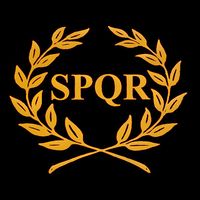Terra sigillata
(add OE link) |
m (recat) |
||
| (One intermediate revision by one user not shown) | |||
| Line 1: | Line 1: | ||
| + | {{LanguageBar|Terra sigillata}} | ||
| + | |||
'''''Terra Sigillata''''' or "sealed earth", which is sometimes called "'''Samian ware'''", and "'''Arretine ware'''" are slip-glazed ceramic vessels. A slip glaze is a glaze or surface finish made of a suspension of very fine clay particles. The finish is polished to a fine luster before firing. When fired at the correct temperature, the ceramic takes on the distinctive, somewhat metal-like luster that is the distinguishing feature of this type of ceramic. | '''''Terra Sigillata''''' or "sealed earth", which is sometimes called "'''Samian ware'''", and "'''Arretine ware'''" are slip-glazed ceramic vessels. A slip glaze is a glaze or surface finish made of a suspension of very fine clay particles. The finish is polished to a fine luster before firing. When fired at the correct temperature, the ceramic takes on the distinctive, somewhat metal-like luster that is the distinguishing feature of this type of ceramic. | ||
| Line 10: | Line 12: | ||
{{Template:Commercial|Iulia Cassia Vegetia}} | {{Template:Commercial|Iulia Cassia Vegetia}} | ||
| − | [[Category: | + | [[Category:Ancient Rome]] |
Latest revision as of 02:25, 28 July 2008
Home| Latíné | Deutsch | Español | Français | Italiano | Magyar | Português | Română | Русский | English
Terra Sigillata or "sealed earth", which is sometimes called "Samian ware", and "Arretine ware" are slip-glazed ceramic vessels. A slip glaze is a glaze or surface finish made of a suspension of very fine clay particles. The finish is polished to a fine luster before firing. When fired at the correct temperature, the ceramic takes on the distinctive, somewhat metal-like luster that is the distinguishing feature of this type of ceramic.
Pottery of this type is known from across the Roman world. It was a factory-made item and a number of manufacturing centers are known. Fragments bearing maker's marks can be used to date archaeological sites.
References
- POTSHERD: Atlas of Roman Pottery, Terra Sigillata
- www.newarchaeology.com: An introduction to Samian Pottery
Related products
Products related to this topic are sold by: Iulia Cassia Vegetia.
